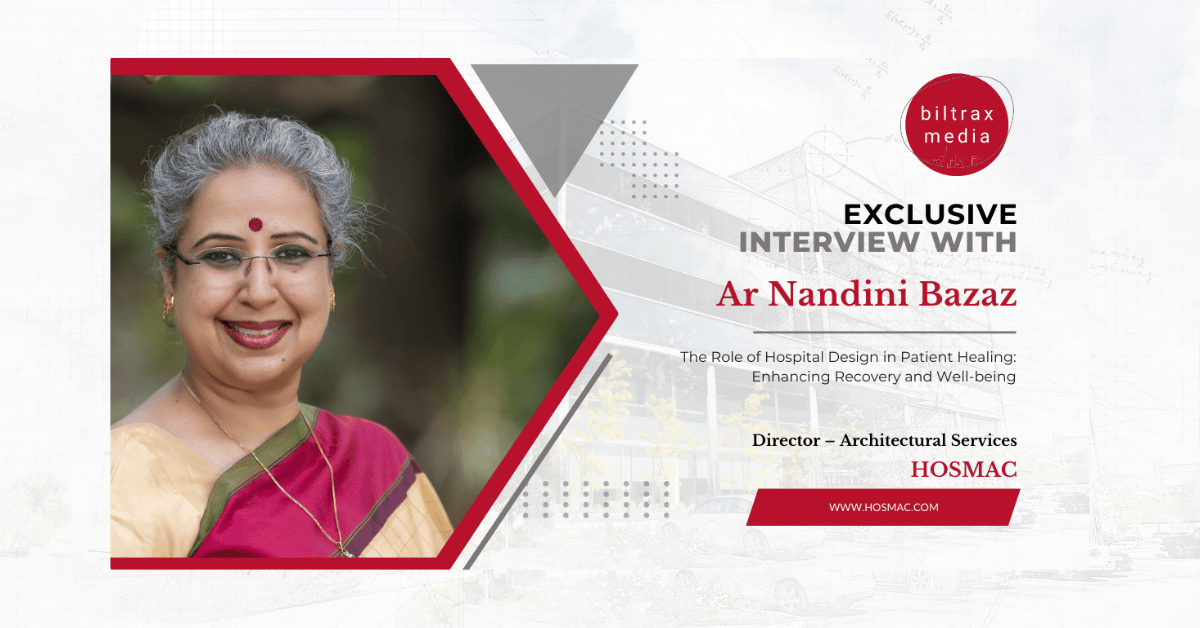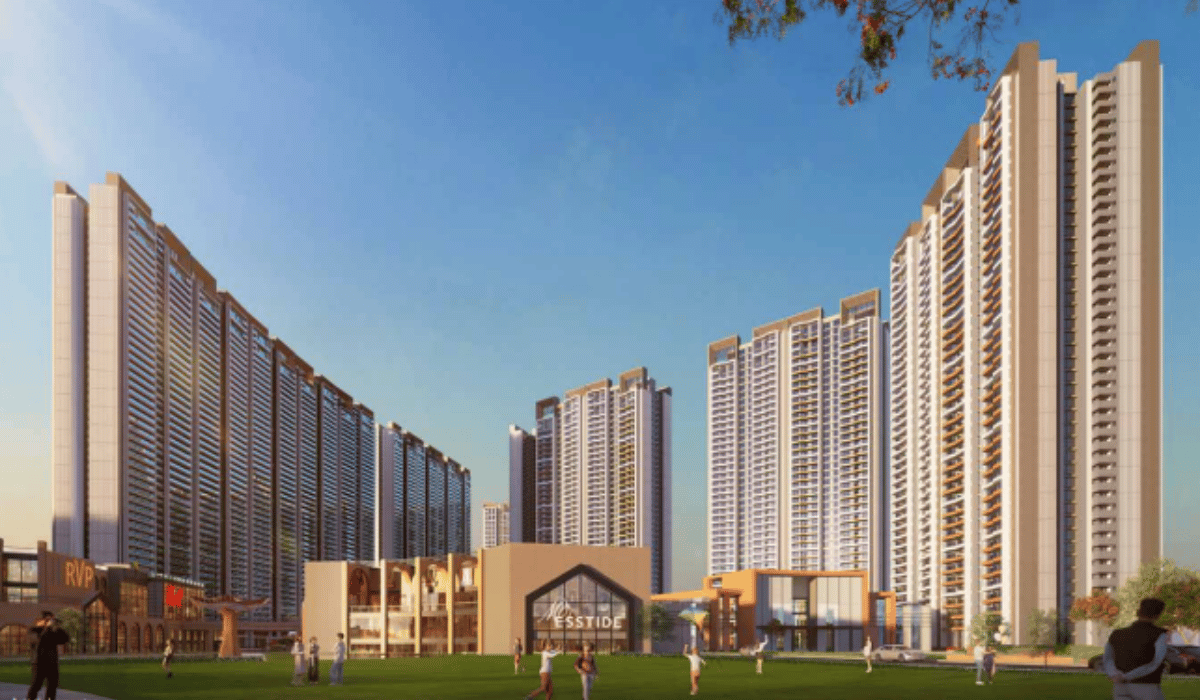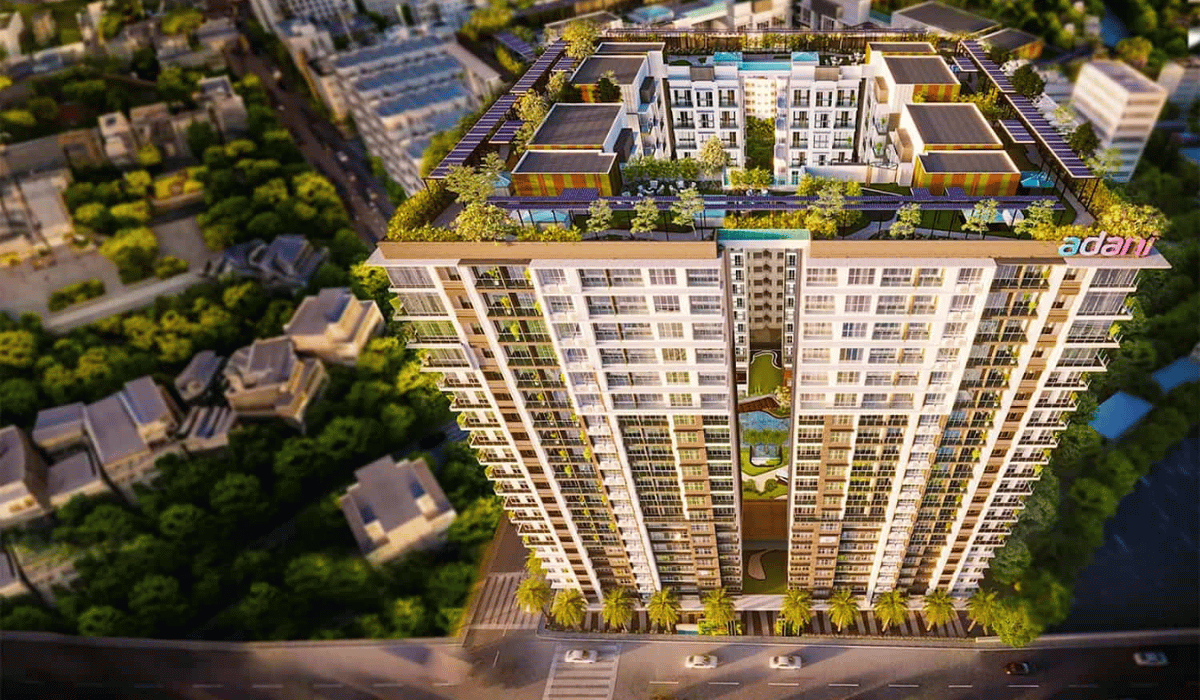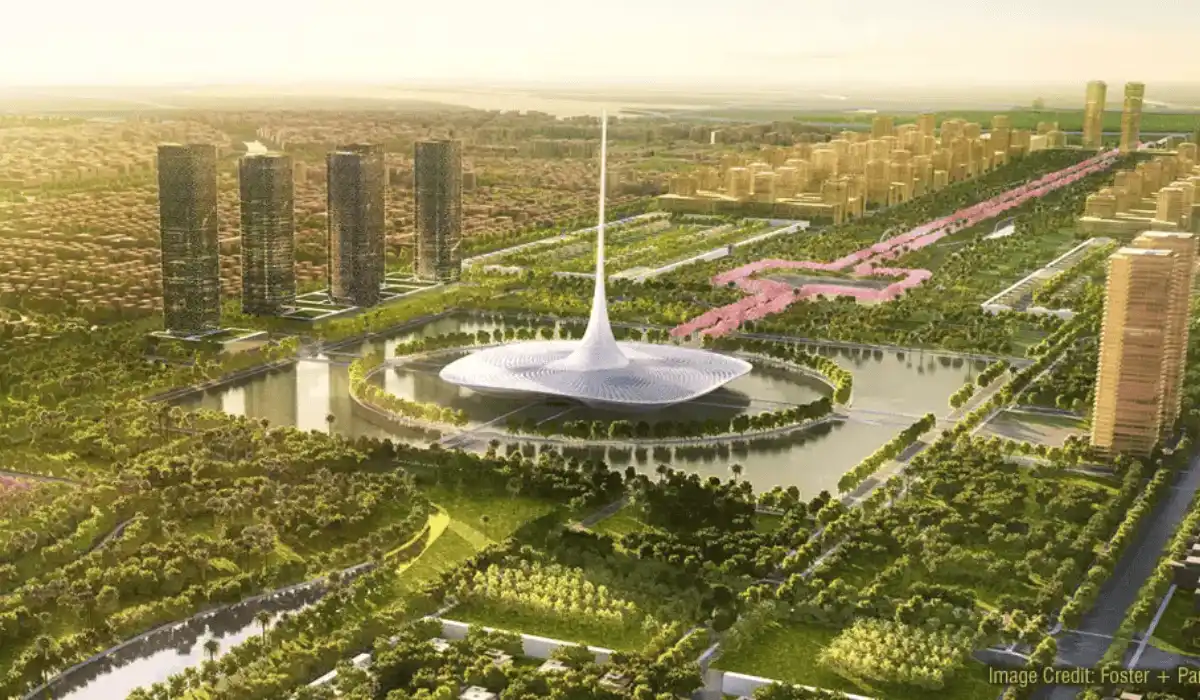A facet of creating hospitals that is often undermined is hospital design. Dismissed under the guise of ‘vanity’, people fail to understand that hospital design isn’t just about how a space looks—it’s deeply tied to how people feel, heal, and respond to treatment. Modern research strongly supports the idea that architecture and interior design elements can have a notable effect on recovery—accelerating healing, minimizing stress, and enhancing the overall healthcare experience. From the layout of patient rooms to the type of lighting used, every design choice can have a measurable impact. In this article, Ar Nandini Bazaz, Director – Architectural Services, HOSMAC, explores the critical connection between hospital design and patient healing, uncovering evidence-based strategies that lead to better outcomes.
The Impact of Hospital Design on Patient Recovery
1. Natural Light and Faster Healing
Natural light is a powerful factor in healthcare environments, influencing both patient recovery and staff performance. One prime example comes from a study which found that patients with access to sunlight had hospital stays that were 21% shorter compared to those in windowless rooms. This aligns with the principles of evidence-based design—a concept rooted in the idea that changes to the physical environment can directly affect health outcomes, much like evidence-based medicine.
Exposure to natural light supports circadian rhythms, improving sleep, mood, and mental health. Patients in well-lit rooms experienced less distress, used fewer painkillers, and showed greater resilience. Staff also benefited, with improved performance in visual tasks, medication accuracy, and fewer errors in well-illuminated environments.
Key design features to incorporate:
- Floor-to-ceiling windows
- Skylights in hallways or common areas
- East- or south-facing patient rooms
- Use of reflective surfaces to distribute light evenly

Ultimately, natural light remains one of the most critical design elements for supporting both physical healing and operational efficiency in hospitals.
2. Noise Control and Stress Reduction
Hospitals are surprisingly noisy environments, filled with the constant hum of machines, overhead announcements, and conversations among staff. According to BMJ Quality & Safety, average hospital noise levels often exceed 70 decibels—well above recommended limits.
Excessive hospital noise can disrupt sleep, elevate stress, and delay recovery. Research links chronic sleep deprivation to weakened immunity, heart and respiratory issues, and mental health challenges. Healthcare workers aren’t immune either—constant noise leads to fatigue, burnout, and reduced concentration. While medical equipment can’t be silenced, smart hospital design can manage sound through acoustic materials, quiet zones, and strategic layouts. These measures protect both patients and staff, creating a more focused, restorative environment without sacrificing functionality.
Effective noise-reducing strategies include:
- Installation of sound-absorbing ceiling tiles and wall panels
- Strategic placement of nurse stations away from patient rooms
- Implementation of “quiet hours” during rest periods
- Double-glazed windows and acoustic doors

Reducing auditory stress not only helps patients heal but also creates a calmer, more focused environment for staff and visitors alike.
3. Indoor Air Quality and Infection Control
Clean air truly saves lives, especially within hospital walls. Indoor air quality (IAQ) is a fundamental aspect of infection control, playing a vital role in protecting vulnerable patients and healthcare workers alike. Hospitals are high-risk environments due to their dense occupancy of immunocompromised individuals and frequent exposure to pathogens. Poor IAQ allows harmful microbes to linger in the air, increasing the risk of airborne transmission and contributing to indoor air pollution. Outbreaks of diseases like influenza and COVID-19 have underscored how inadequate ventilation, and poorly maintained systems can accelerate the spread of infections.
In this context, IAQ interventions are not just design features—they are critical public health measures. Strategic improvements in ventilation, smart hospital architecture, and ongoing maintenance can drastically reduce infection rates and promote a safer healing environment.
Effective IAQ enhancements include:
- High-efficiency particulate air (HEPA) filters to trap airborne contaminants
- UV-C light disinfection systems integrated into HVAC units for sterilization
- Antimicrobial surfaces, such as copper-infused handles, to reduce surface transmission
- Proper room pressurization, especially negative-pressure rooms for isolating infectious patients

These interventions don’t just enhance patient safety—they also safeguard healthcare professionals and contribute to a more resilient public health infrastructure.
4. Biophilic Design: Bringing Nature Inside
Biophilia—the innate human connection to nature—plays a powerful role in healthcare design. Incorporating natural elements like greenery, daylight, or outdoor views can lower stress, reduce pain perception, and improve mood. Research shows that even a simple window view can promote healing. By easing anxiety and supporting mental well-being, biophilic design accelerates recovery and enhances patient and staff experiences.
Biophilic elements in hospital design include:
- Indoor gardens or living walls
- Nature-themed art and murals
- Outdoor courtyards accessible from recovery areas
- Aquarium installations in waiting rooms

It’s not just aesthetic—it’s essential, forming the backbone of hospital environments that prioritize comfort, humanity, and healing.
Design’s Role in Medical Staff Efficiency
While patient care is the priority, hospital design must also serve the people delivering that care. Studies show that decentralized nursing stations—smaller hubs located closer to patient rooms—can reduce unnecessary walking and boost nurse-patient interaction.
Efficiency-boosting design features include:
- Clear sightlines from nurses’ stations to rooms
- Storage areas close to treatment zones
- Ergonomic furniture and layout for quick access to tools
- Smart lighting systems that adjust based on usage patterns
A well-designed workspace supports staff well-being, improves communication, and ultimately contributes to better patient outcomes.
Also Read:
Designing beyond aesthetics – the Science of Healing Spaces
Azzure apartments, Chennai | FOAID Designs
Trendsetters of Tomorrow: Rvvardé’s must-have furniture for elevated spaces

Biltrax Construction Data is tracking 34,000+ projects on their technology platform for their clients.
Get exclusive access to upcoming projects in India with actionable insights. Furthermore, gain a competitive advantage for your products in the Indian Construction Market.
Visit www.biltrax.com or email us at contact@biltrax.com to become a subscriber and generate leads.
Disclaimer: The information herein is based upon information obtained in good faith from sources believed to be reliable. All such information and opinions can be subject to change. Furthermore, The image featured in this article is for representation purposes only. It does not in any way represent the project. If you wish to remove or edit the article, please email editor@biltrax.com.
Discover more from Biltrax Media, A Biltrax Group venture
Subscribe to get the latest posts sent to your email.






















